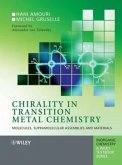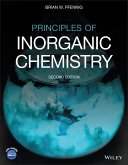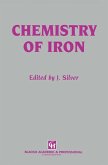Since the discovery of ferrocene and the sandwich-type complexes, the development of organometallic chemistry took its course like an avalanche and became one of the scientific success stories of the second half of the twentieth century. Based on this development, the traditional boundaries between inorganic and organic chemistry gradually disappeared and a rebirth of the nowadays highly important field of homogeneous catalysis occurred. It is fair to say that despite the fact that the key discovery, which sparked it all off, was made more than 50 years ago, organometallic chemistry remains a young and lively discipline.
From the reviews:
"An account of major (and many minor) discoveries and aspects of organotransition metal chemistry from a personal and historical perspective. ... this book being primarily of interest to advanced level students (undergraduate and graduate), faculty, and practicing chemists, particularly in the inorganic and, to a lesser extent, organic fields. It could be a useful and unique resource for courses in the inorganic and organometallic areas because of its historical and biographical information and perspectives. I found it well-written, interesting, and enjoyable reading." (Kenneth M. Nicholas, Journal of Chemical Education, Vol. 86 (12), December, 2009)
"Landmarks in Organo-Transition Metal Chemistry - A Personal View ... is a very informative and exciting account of the historical development of organo-transition-metal chemistry from the 19th century up to the present. ... It is not only the comprehensive description ... of organo-transition-metal compounds that makes this book so valuable for chemists and advanced students, but also the many references to original publications, the descriptive figures, and the scores of images ... that make the book by Helmut Werner so valuable, worth reading, and unique." (Alexander Filippou, Angewandte Chemie, Vol. 48, 2009)
"In a book that is neither wholly text nor wholly biographical, the reader is taken on a journey through the history of organometallic chemistry. Necessarily focusing on some areas in which the author has personally conducted research, the book is full of fascinating insights into the development of one of the largest subdivisions of chemistry. Despite the wealth of content, the book is remarkably easy to read and emphasizes the rapid growth of the subject area and the influence it has had on chemistry, both in the past and continuing into the future." ("On Our Bookshelf" section, Nature Chemistry, Vol. 1, 2009)
"An account of major (and many minor) discoveries and aspects of organotransition metal chemistry from a personal and historical perspective. ... this book being primarily of interest to advanced level students (undergraduate and graduate), faculty, and practicing chemists, particularly in the inorganic and, to a lesser extent, organic fields. It could be a useful and unique resource for courses in the inorganic and organometallic areas because of its historical and biographical information and perspectives. I found it well-written, interesting, and enjoyable reading." (Kenneth M. Nicholas, Journal of Chemical Education, Vol. 86 (12), December, 2009)
"Landmarks in Organo-Transition Metal Chemistry - A Personal View ... is a very informative and exciting account of the historical development of organo-transition-metal chemistry from the 19th century up to the present. ... It is not only the comprehensive description ... of organo-transition-metal compounds that makes this book so valuable for chemists and advanced students, but also the many references to original publications, the descriptive figures, and the scores of images ... that make the book by Helmut Werner so valuable, worth reading, and unique." (Alexander Filippou, Angewandte Chemie, Vol. 48, 2009)
"In a book that is neither wholly text nor wholly biographical, the reader is taken on a journey through the history of organometallic chemistry. Necessarily focusing on some areas in which the author has personally conducted research, the book is full of fascinating insights into the development of one of the largest subdivisions of chemistry. Despite the wealth of content, the book is remarkably easy to read and emphasizes the rapid growth of the subject area and the influence it has had on chemistry, both in the past and continuing into the future." ("On Our Bookshelf" section, Nature Chemistry, Vol. 1, 2009)
Aus den Rezensionen:"... ein sehr informatives,äußerst spannendes Werk ... Es sind ... die umfassenden Ausführungen des Autors über die historische Entwicklung der wichtigsten Organometallverbindungen der Übergangselemente, die dieses Buch so empfehlenswert ... machen. Vielmehr sind es die umfangreichen Verweise auf Originalveröffentlichungen, die anschaulichen Abbildungen und die zahlreichen Bilder und Biographien der Protagonisten, die das Buch ... wertvoll, lesenswert und einmalig machen. ... Hierzu kann man Helmut Werner in aller Bescheidenheit gratulieren und für das vorliegende, seine Leistungen krönende, Werk über die Meilensteine eines aktuellen Gebiets der Chemie danken ..." (Alexander Filippou, in: Angwandte Chemie, 2099, Vol. 121, S. 17613f.)"... ist eine faszinierende Geschichte ... geschickt die eigene Biographie mit der nationalen und internationalen Wissenschafts geschichte ... bieten dem Leser eine Basis für vertiefende Recherchen. Dieses außergewöhnliche Buch ist selbst ein Grenzstein ... allen Organometallchemikern, fort geschrittenen Studenten und an Chemiegeschichte lnteressierten kann es aufs wärmste empfohlen werden." (Walther Jena, in: Nachrichten aus der Chemie, May/2010, Vol. 58, S. 585 f.)








